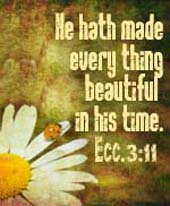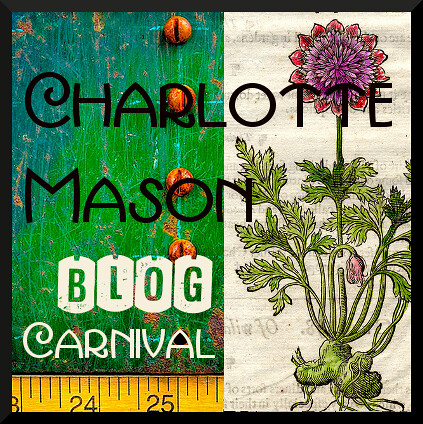
Have you ever felt overwhelmed in the face of such a giant book like Handbook of Nature Study or other field guides not knowing where exactly to begin? They have SO much interesting information! How might we go about making them useful tools in education? Well, these books can be very helpful, but not for whom you might at first think. Have you considered that as teachers we may find scheduling readings for ourselves from the Handbook of Nature Study or other field guides extremely helpful? Did you ever think using them with the children could actually be a problem? To a certain degree we must take care not to use these kinds of books heavily with our children except perhaps for identification after a rich time outside of careful observation and the child's completion of an entry in the his/her nature notebook. Here's why:
It is possible to find all the information in books we could ever want on nature study. There are books which contain every observable, and unobservable fact for that matter, the realization of which certainly might rob us and our children of the initial wonder and resulting keen observation of aspects of nature we've never seen before. Identification books ought to be used by the teacher mommy for reference preferably before the nature study/walk and by the student only afterward, according to CM.
" All men are interested in Science - At former meeting of the British Association, the President lamented that the progress of science was greatly hindered by the fact that we no longer have field naturalists - close observers of Nature as she is. A literary journal made a lamentable remark thereupon. It is all written in books, said this journal, so we have no longer any need to go to Nature herself. Now the knowledge of Nature which we get out of books is not real knowledge; **the use of books is, to help the young student to verify facts he has already seen for himself. Let us, before all things, be Nature-lovers; intimate acquaintance with every natural object within his reach is the first, and possibly, the best part of a child's education.** " Vol.2, p62Personally, I aspire to become a nature field guide of sorts for my children, full of information, and yet able to wisely dole out precious gems in a provocative manner, or then refrain from doing so at just the right moment. :) I wish I'd grown up studying nature, or at least in close proximity to someone who had. But I didn't. I get to study now. I get out as often or more than my own children and am every bit as curious as they might be. I can't get enough of the field guides... I've got to have answers! Looking over the field guides helps 'ignorant' me to have some information in store for my wonder-full children when they have need of it. Of course on the same note, most of the time just staying out of their way is paramount!
















6 comments:
I just read your answer on the AO group too, tee hee, silly me was trying to read some of HONS to my dd but I've just realised I should be reading it for myself lol! Thanks:)
You're right. We need to sometimes research things ourselves ahead of time. It's too frustrating to learn some in-depth stuff while the kids are waiting for us to figure out what we're even doing! We become the resident experts, and the kids think we're so smart.
What an encouraging and helpful information! I agree about the Handbook of Nature study. So very smart to set aside time to read for ourselves and become the book for our children. Thank you!
I'm constantly thumbing through our field guides, especially when I know something is coming up because of the time of year or hike will be taking; sort of a prep time. But I've also decided it's O.K. to learn with them and look for the information together. Thanks for the post!
Looking up objects of interest in a nature guide is an indirect way of teaching observation and learning by which characteristics things are classified. I don't have my kids identify everything, just some things once in awhile; I look up the rest to help me increase my knowledge.
@Kris,
Yes! I agree. When they want to look it up, by all means, and I'd be more than happy to help them! But I don't push the guides or even really suggest using them, though they often see me looking things up to serve my own interests and occasionally they end up getting sucked in ;)
But observing the things in *real life* is absolutely key; forming a relationship of sorts with the plant from sprout to bud to bloom, etc. is hugely different than looking at something in a book! They'll remember it ten times longer! And, with constant observation of the living things they see, the children will naturally classify objects into like groups whether they articulate it to us or not.
"You pick up a pebble. Its edges are round and smooth. It is water-worn and weather-worn and that little pebble brings you face to face with disintegration, the force to which, more than any other, we owe the aspects of the world we call picturesque-glen, ravine, valley and hill. It is not necessary to tell the child anything about dicotyledonous plants or disintegration, only that he should observe the pith within the twig and the rounded edges of the pebble. By and by he will learn the bearing of the facts with which he is already familiar-a very different matter from learning the reason why of facts which hitherto have never come under his notice. The power to classify, discriminate, and distinguish between things that differ is amongst the highest faculties of human intellect, and no opportunity to cultivate it should be allowed to pass. For this reason children should be encouraged to make such rough classifications as they can with their slight knowledge of both plant and animal forms of life. A classification taken from books, that the child does not make out for himself, cultivates no power but that of verbal memory." The Charm of Nature Study
Post a Comment